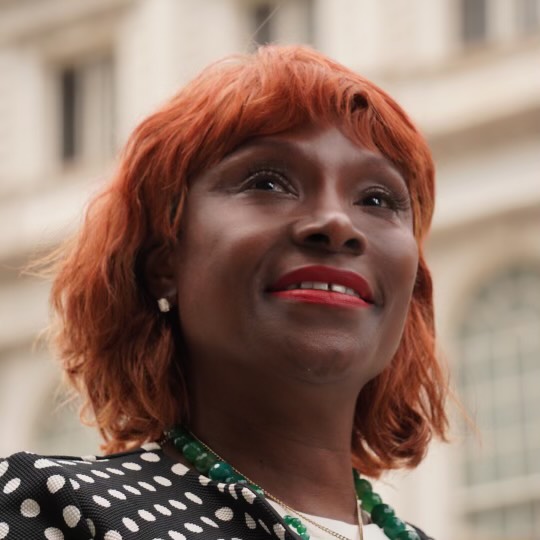A Front Seat to NYC’s Rebirth: Mayor Eric Adams Top Aide Ingrid Lewis-Martin Helps Navigate Rough Seas

New York City is not just Manhattan.
Of course, that is stating the obvious for real New Yorkers. But from outside of the five boroughs, the eyes are always on Manhattan, and without the heart, diversity and histories of Brooklyn, Queens, Staten Island and the Bronx, Manhattan would not be the legendary place it has been for generations.
Perhaps without the other boroughs, Manhattan would not be the resilient metropolis it has always been, reinventing itself for every generation and usually after calamity.
“This city always fights back,” says Ingrid Lewis-Martin, chief advisor to New York City Mayor Eric Adams.
Lewis-Martin, also a chaplain, knows the city. The child of Barbadian and Panamanian immigrants — her mother was born in New York City but grew up in Panama — Lewis-Martin was raised in the Bedford Stuyvesant and Crown Heights sections of Brooklyn.
Her political career started in 1983, first volunteering on the re-election campaign for the late U.S. Rep. Major R. Owens and later serving as deputy campaign manager. After receiving her license from the city Board of Education, Lewis-Martin was hired as a middle school teacher in English and social studies at I.S. 320 Jackie Robinson, her alma mater.
She taught at the school from 1984 to 1992, also serving as dean of students and graduation coordinator, as well as a teacher of modern and African dance in the after-school programs. Lewis-Martin was later hired by Medgar Evers College, first to work as an instructor in one of its programs geared at assisting women on welfare to earn their high school diploma and a college degree, and subsequently to be director of their Progressive Adolescent Vocational Exploration (PAVE) program.
Lewis-Martin has been called by some the “Lioness of City Hall.” The role of a lioness in the wild is well-known. She is fierce in protecting her family and pride. She has always been known as an unwavering voice of support for Mayor Adams, someone she has known since the 1980s when Adams and Lewis-Martin’s husband, Glenn Martin I, were in the New York City Police Academy together.
“We were all just friends, just spending time together,” says Lewis-Martin.
When Adams decided to run for mayor, he asked Lewis-Martin to help lead the campaign.
“It was the most difficult campaign I have ever been a part of,” she says. “There were so many people who tried to be divisive and attack Mayor Adams and me. It was very tough on our partnership, but we made it through.”
When Mayor Adams took office, he was facing a post-COVID city that had, in many ways, fallen apart. Thousands of jobs were lost. Small businesses were shuttered for good. A mass exodus from all five boroughs was underway. While much of it was COVID-related, as remote work provided many people to choose suburban and rural environs, the policies of the past had transformed the city.
“We inherited so many issues, amongst the most alarming being that thousands of homeless people — many of whom are living with mental health issues — were living on the streets,” says Lewis-Martin. “That had to change; we had to get them the services they needed.”
To ensure the initiative was comprehensive, Mayor Adams worked with his deputies — especially Deputy Mayor Anne Williams-Isom, who oversaw the effort — mental health advocates and professionals, and the New York City Police Department. Despite these efforts, many progressive advocates tried to fight Mayor Adams’ initiative to ensure homeless individuals got the care they needed.
“They tried to argue that we had no right to end the encampments, that it was beneficial for homeless individuals to live that way,” says Lewis-Martin. “But nobody in their right mind wants to live on the street, to be homeless. Every person deserves to have a bed and shelter, and many homeless people were not being treated for severe mental illness that was putting them in danger.”
The city is coming back, but progress is being threatened by a new challenge.
The city is besieged by the weight of the tens of thousands of asylum seekers who have arrived in the city. The cost to the city is enormous and presents the real possibility that some government services will lose funding or even be cut entirely. It is the most pressing issue facing the Adams administration and is a nationwide crisis seizing many cities across the country.
“New York is spending more than $4.2 billion providing for the migrants who have been sent to New York City with little help from the Biden administration,” says Lewis-Martin. “We did have assistance from U.S. Senator Schumer and Congressman Hakeem Jeffries, who got the city $850 million, but that is not enough.”
Todd Shapiro is an award-winning publicist and associate publisher of Dan’s Papers.



